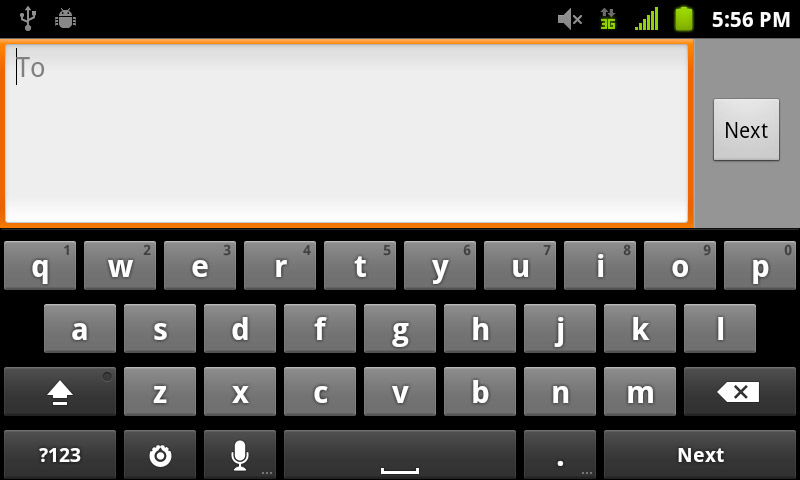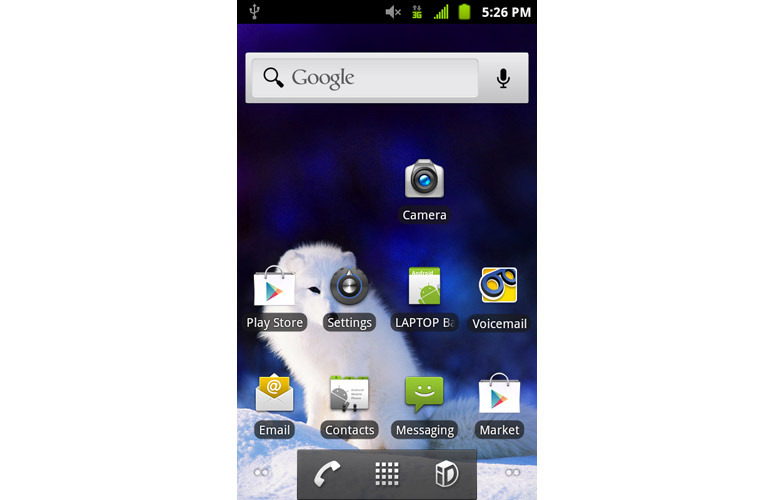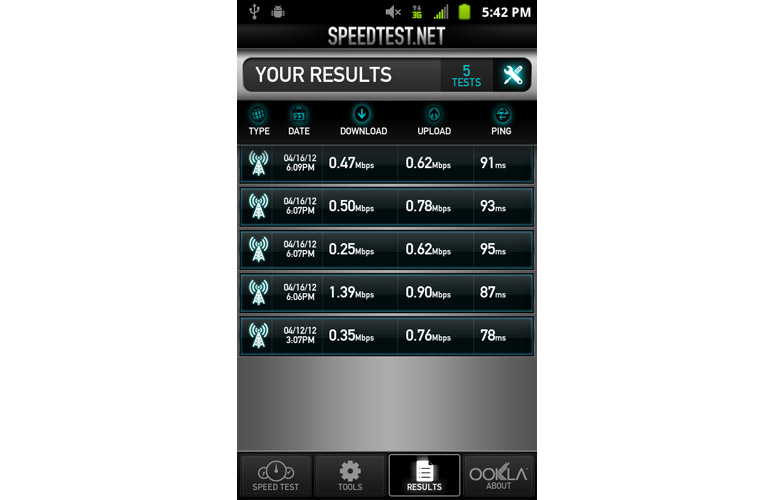Laptop Mag Verdict
The LG Viper 4G LTE is the first phone to ride on Sprint's new network, but you're going to have to wait to enjoy that unlimited high-speed data.
Pros
- +
Bright screen
- +
Eco-friendly design
- +
Good camera
- +
Google Wallet support
Cons
- -
Can't use 4G LTE yet
- -
Short battery life
- -
Runs hot
Why you can trust Laptop Mag
Sprint has a chicken-and-egg quandary on its hands: Does it roll out its LTE network or does it seed the market with LTE-capable smartphones first? The wireless carrier has gone the latter route, releasing the LG Viper 4G LTE. This $99 Android smartphone will be able to ride on the carrier's high-speed data network later this year. But is it worth the wait?
Design
Click to EnlargeThe LG Viper is one of the greener phones available. That's because the phone's body is 50 percent recycled plastic, and the packaging is 87 percent recycled material. In addition, this handset earned a platinum rating by UL Environment and ships with a charger that is smart enough to turn itself off when the Viper has enough juice.
In contrast to the pocket-stretching phones we've seen recently, we liked the Viper's one-hand-friendly size of 4.6 x 2.6 x 0.47 inches. Its 5-ounce weight puts it in the same league as the LG Lucid (5 ounces) and the iPhone 4S (4.8 ounces), but the Viper is thicker than those two phones.
Click to EnlargeThe back of the phone is plastic that's painted to look like brushed metal. On the top is a 3.5mm headphone jack and the power button, and a volume rocker switch and microUSB port are on the left. The face is dominated by a touch screen and black bezel, and is ringed in chrome. All the edges are curved slightly (though not as much as the Nexus S 4G), making it comfortable to hold.
We wish that the backlight for the four capacitive navigation buttons at the bottom (Home, Menu, Back, Search) didn't time out so quickly; it's annoying to have to guess at their location.
Heat
After just a few minutes of surfing the Web using the phone's 3G radio only, the back of the device reached an uncomfortable 103 degrees Fahrenheit. The handset may run even hotter over 4G.
Display and Audio
Click to EnlargeThe Viper's 4-inch display is covered in Gorilla Glass and has a resolution of 800 x 480. The Evo Design 4G, identically priced at $99, has a sharper 960 x 540-pixel display. However, with a measured brightness of 655 lux, the Viper more than doubles the category average and beats the LG Lucid (610 lux) as well as the Design 4G (411 lux). It even rivals the LG Marquee (684 lux).
Not surprisingly, when we watched a trailer for "The Avengers" on the Viper, the images were wonderfully bright. However, we noticed a bit of pixelation around the edges of characters, and colors, from reds and oranges in explosions to grays and blacks in night scenes, weren't as rich as we'd like.
The small, rear-mounted speaker on the Viper cranked out loud but tinny audio. Bruce Springsteen's "Dancing in the Dark" sounded as if it was coming from an AM radio on the Atlantic City Boardwalk. The location on the back of the phone also made the speaker susceptible to being covered by our hand if we were holding the phone in landscape mode.
Keyboard

Click to EnlargeNothing special here: The Viper 4G LTE has the standard Android keyboard as well as Swype, but we liked the gentle haptic feedback when using the former option.
User Interface
Sprint and LG exert a lighter touch on the Viper than on other LG smartphones such as the Lucid. There are no lock-screen shortcuts (something we'd like to see), but thankfully, the apps menu hasn't been chopped up into folders.

Click to EnlargePerhaps the biggest modification to the Android Gingerbread (2.3) interface is that there are only three permanent icons at the bottom: Phone, Apps, and Sprint ID. We wish we also could have had a link to the browser here, or at least the option to change the icons.
A Sprint representative said the phone will be updated to Android Ice Cream Sandwich at a yet-to-be-determined date.
Performance
Packing a 1.2-GHz dual-core processor, 1GB of RAM and 4GB of ROM, the Viper 4G LTE offers strong performance. Its score of 3,042 on the Quadrant benchmark was about 1,100 points higher than average and 500 points higher than the LG Lucid. On An3DBench, the Viper's score of 7,421 was about 500 points above average, 700 points higher than the Nexus S 4G (6,785), 1,400 points higher than the EVO Design 4G (5,975), and on a par with the LG Lucid (7,396).
We saw only the slightest of pauses when opening the app menu or the apps themselves. For the most part, swiping between screens was a seamless experience. We did notice a bit of lag, though, when returning to the home screen from apps.
Apps
Click to Enlarge
The LG Viper 4G LTE comes with Sprint ID packs, which lets you load themed packages of apps, wallpaper, widgets and ringtones to the phone. When we were testing the Viper, there were 27 packs available, many of limited appeal. We can't see many consumers downloading the Team RadioShack or the Mizzou Student ID pack.
Viper owners also can download Box and get 50GB of free online storage (normally $19.99 per month) indefinitely. However, consumers have to sign up before July 22.
Sprint Music Plus (pictured), Sprint NBA Mobile, Sprint TV & Movies, NASCAR, Google Wallet and TeleNav GPS also are included. TeleNav GPS is free, but a premium version ($4.99 per month) offers speed limits, lane assist and commute reports. We suggest sticking with the free Google Navigation. TeleNav was slow to load pages and maps.
Google Wallet
The Viper ships with an NFC (Near Field Communications) chip embedded in the back cover, which works in tandem with Google Wallet. With this technology you pay for items at participating stores such as Duane Reade by just tapping your phone on an NFC reader at the checkout.
3G, 4G LTE and Web Browsing

Click to EnlargeUntil Sprint's LTE network is activated, don't expect blazing speeds on the Viper. While the mobile version of NYTimes.com loaded in a swift five seconds, ESPN Mobile took an average of 17 seconds, and Laptopmag.com took over 30 seconds.
Sprint says its LTE service will be available in Atlanta, Baltimore, Dallas, Houston, Kansas City and San Antonio by mid-2012. The carrier promises to cover more than 120 million people by the end of the year, but it hasn't detailed which markets will come next and exactly when.
The good news is that you'll get unlimited 4G LTE data once Sprint makes those speeds available in your neck of the woods. 3G is unlimited, too.
Camera & Video

Click to EnlargeThe Viper's 5-MP rear-facing camera took suitably colorful pictures of flowers outdoors. The green of the stems and leaves, as well as the pink petals of tulips, had a nice amount of saturation. Indoor shots also came out quite well―the camera compensated for artificial light. However, when we zoomed in to 100 percent, there was a lot of graininess in the image.
We liked the multiple editing options, which include 19 filters and six brightness and color adjustments.
A 1080p recording of New York City traffic on Fifth Avenue was smooth, and the phone was quick to adjust its exposure from light to dark areas. The Viper's microphone also did a good job of picking up the rumble of trucks and buses. We did notice a bit of noise in darker areas.
Call Quality
The Viper 4G LTE offered mixed call quality. When we placed a call indoors to another cell phone, we could hear the recipient clearly, but she complained that we sounded distant and fuzzy. We then made a call to a landline user. While we were indoors, the recipient said we sounded fine, but when we moved to a street corner, he told us we sounded as if we were in a tunnel. He didn't hear any of the traffic in the background, however.
Battery Life
One area where the Viper falls down is battery life. Even though we had disabled the Viper's LTE radio, its 1,700-mAh battery lasted just 3 hours and 57 minutes on the LAPTOP Battery Test (Web surfing via 3G). The average smartphone lasts two hours longer, and the EVO Design 4G and the Nexus S both lasted 5:25 over 4G. The Lucid lasted 5:04 on Verizon's LTE network.
Data Plans and Value
Sprint's unlimited data plan with 450 minutes of talk time costs $79.99 per month. Over 24 months, that's $1,919. By comparison, similar plans on AT&T (450 minutes, plus a 5GB 4G data plan) and Verizon Wireless (450 minutes, unlimited text, 4GB of data) will cost $89.99 per month, a total of $2,159 after two years. That's a savings of $240.
Verdict
Click to EnlargeSprint calls the LG Viper "future-proof," since it will be ready to take advantage of Sprint's LTE network once that network is finally rolled out. But depending on where you live, you might not be able to use this phone's best feature until you're well into that two-year contract. So in the meantime, how does it compare with other $99 phones on Sprint? If you can't wait for faster throughput, then we suggest the EVO Design 4G, which has a higher-resolution screen and longer battery life. The LG Lucid on Verizon is another good option, a $79 device that offers LTE speeds today. But if you want a solid 3G phone that will offer unlimited 4G LTE down the road, the Viper is definitely worth a look.
LG viper 4G LTE Specs
| Bluetooth Type | Bluetooth 2.1 EDR |
| Brand | LG Electronics |
| CPU | 1.2-GHz dual-core |
| Camera Resolution | 5 MP |
| Carrier | Sprint |
| Company Website | www.sprint.com |
| Data | EV-DO Rev. A, LTE |
| Display (main) | 4 inches/800 x 480 |
| Form Factor | Candybar Touchscreen |
| Front Camera Resolution | 1.3MP |
| GPS | Yes |
| Internal Memory | 4GB |
| Memory Expansion Type | microSDHC |
| Operating System | Android 2.3 |
| Ports | microUSB, 3.5mm headphone |
| RAM | 1GB |
| Size | 4.6 x 2.6 x 0.47 inches |
| Talk / Standby Time | 5.3 hours |
| Weight | 5 ounces |
| Wi-Fi | 802.11b/g/n |
